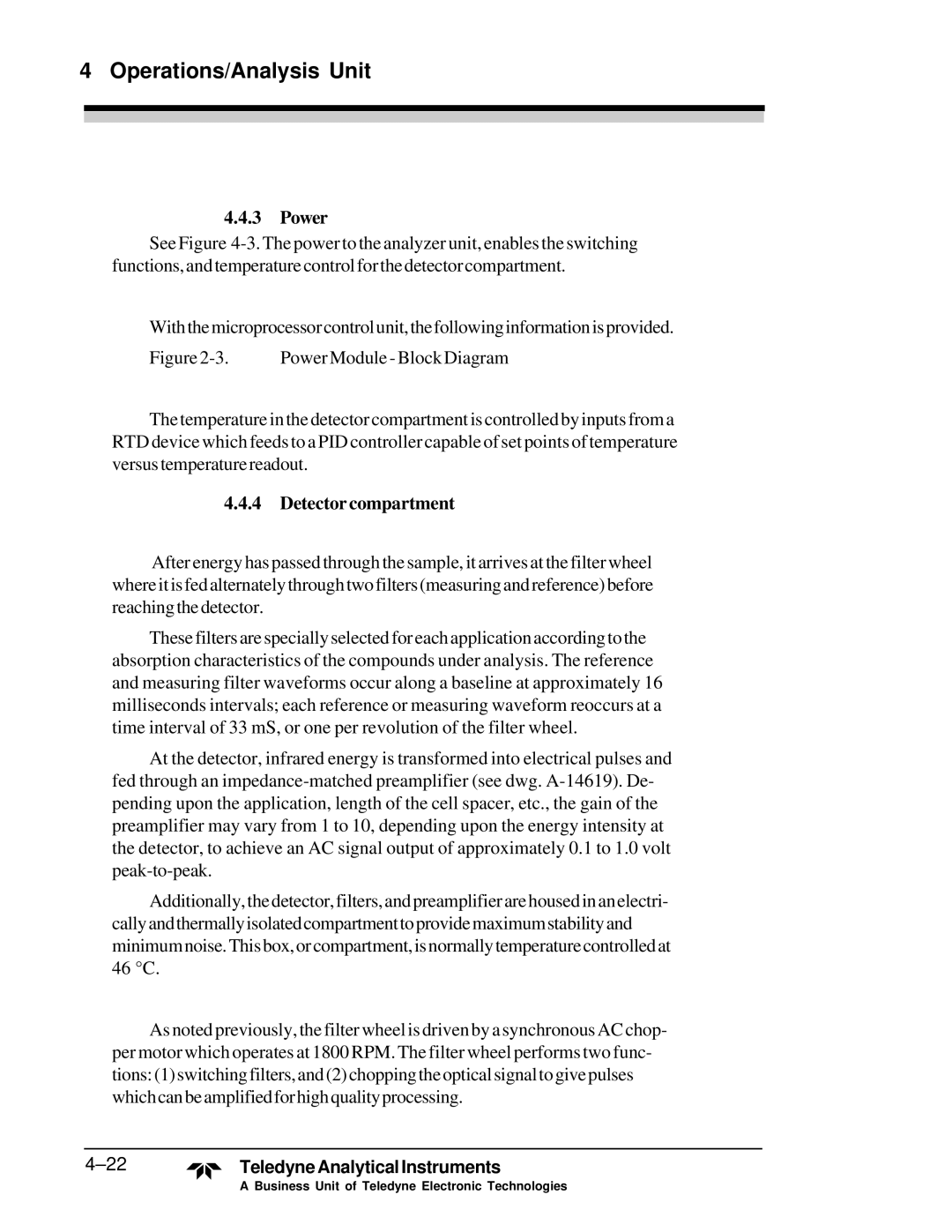
4 Operations/Analysis Unit
4.4.3Power
See Figure
Withthemicroprocessorcontrolunit,thefollowinginformationisprovided.
Figure 2-3. Power Module - Block Diagram
The temperature in the detector compartment is controlled by inputs from a RTD device which feeds to a PID controller capable of set points of temperature versustemperaturereadout.
4.4.4Detectorcompartment
After energy has passed through the sample, it arrives at the filter wheel whereitisfedalternatelythroughtwofilters(measuringandreference)before reachingthedetector.
These filters are specially selected for each application according to the absorption characteristics of the compounds under analysis. The reference and measuring filter waveforms occur along a baseline at approximately 16 milliseconds intervals; each reference or measuring waveform reoccurs at a time interval of 33 mS, or one per revolution of the filter wheel.
At the detector, infrared energy is transformed into electrical pulses and fed through an
Additionally,thedetector,filters,andpreamplifierarehousedinanelectri- callyandthermallyisolatedcompartmenttoprovidemaximumstabilityand minimumnoise.Thisbox,orcompartment,isnormallytemperaturecontrolledat 46 °C.
As noted previously, the filter wheel is driven by a synchronous AC chop- per motor which operates at 1800 RPM. The filter wheel performs two func- tions:(1)switchingfilters,and(2)choppingtheopticalsignaltogivepulses whichcanbeamplifiedforhighqualityprocessing.
![]()
![]() TeledyneAnalyticalInstruments
TeledyneAnalyticalInstruments
A Business Unit of Teledyne Electronic Technologies
